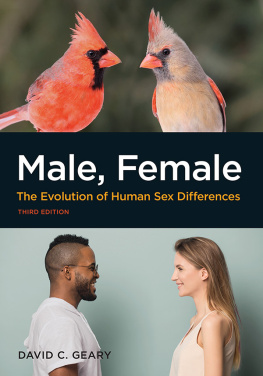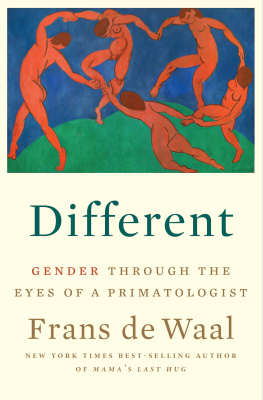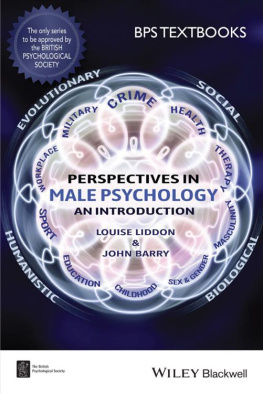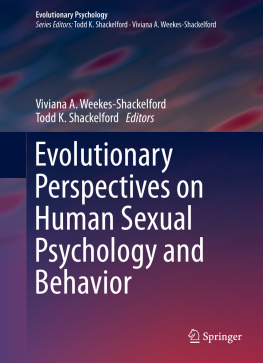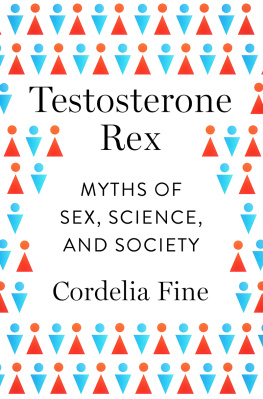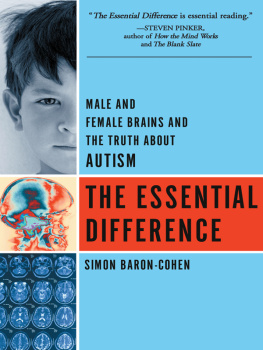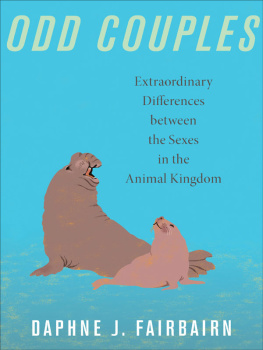Introduction
I t is widely acknowledged that Charles Darwins (1859) On the Origin of Species by Means of Natural Selection is one of the most important works in the history of science. The principles of natural selection provide the key for understanding how new species emerge across evolutionary time and the relations among species, among many other facets of the natural world. One of C. Darwins other pivotal contributions was the discovery of the principles of sexual selection which were detailed in his 1871 book, The Descent of Man, and Selection in Relation to Sex. These principles were debated and largely ignored for 100 years (Cronin, 1991), but in recent decades have been confirmed as the key to understanding the evolution and here-and-now proximate expression of sex differences across a vast array of species, ranging from insects and plants to fish and mammals (Andersson, 1994). Despite the widespread acceptance of evolution generally and sexual selection more specifically by biological scientists, the application of these principles to our own species has been and remains a source of vigorous and often heated debate. The reasons for this resistance are multifaceted and the subject of many book length treatments (see Degler, 1992; Segerstrle, 2000), but it is neither my goal nor my interest to detail these reasons.
My goals are more straightforward: to analyze, synthesize, and integrate our vast knowledge of human sex differences in terms of the principles of sexual selection and to integrate this knowledge with my own ideas about the evolution of human social dynamics (e.g., the human family), the architecture of the human mind and brain, the motivational foci of human behavior, and sex-specific vulnerabilities to stressors (e.g., toxin exposure, malnutrition), among others. Before beginning, it is helpful to have a big-picture view of the core difference between men and women, a picture that frames the many sex differences described throughout this book.
At its core, men have evolved to attempt to organize their social world and life trajectory in ways that increase their social status and influence within the wider communities in which they live, and they have evolved to attempt to gain access to and control of culturally important resources. In short, men are focused on achieving status and recognition in a niche that is valued in the wider culture (e.g., a respected warrior or physician) and through this obtain some level of social potency and access to resources that are important in that culture (e.g., cows, cash). As we will see in , men who are successful in these endeavors are more likely to marry and have children than are their less successful peers. Women have evolved to attempt to create networks of social relationships that provide them and their children with social and emotional support and that enhance their access to and control of culturally important resources. The nature of these networks can vary from nuclear families (e.g., husband, wife, children) to female-biased families (e.g., mother, grandmother, children), but whatever form they take, women who are successful in developing and maintaining social networks have healthier children and more surviving children.
OVERVIEW OF THIS BOOK
In the following sections, I provide a glimpse at the core topics and ideas covered throughout this book. This overview will give readers a sense of where we are going and why I cover specific topics.
In this chapter, I cover two of the most important, profound, and intriguing issues addressed by biological scientists: the mechanisms that result in the origin of new species and the evolution of sexual reproduction. The former is of course natural selection (C. Darwin, 1859; C. Darwin & Wallace, 1858). Although the term natural selection is widely known and is one of the most important discoveries in the history of the natural sciences, most people do not understand or frequently misunderstand how it works (Shtulman, 2006; Sinatra & Danielson, 2016). I provide an overview of how natural selection works and a sampling of the overwhelming evidence that supports this theory. Among other issues, I discuss the difference between microevolution (change within a species) and macroevolution (emergence of new species), and the climatic, ecological (e.g., availability of different food types), and social (e.g., competition among members of the same species for control of limited resources) selection pressures that drive these changes.
Although sex is something most human beings spend a lot of time thinking about (men more than women, as I discuss in ) and is obviously related to reproduction, most of us have not considered the deeper issue of how we came to reproduce sexually. In fact, the evolution of sexual reproduction is one of the most pivotal events in the history of life on this planet. The focus here is on the benefits of sexual reproduction. This is a critical issue, because many species can reproduce asexually and, therefore, do not pay the price of giving up half of their genes in the process. Despite the genetic cost of sexual reproduction, it is what we and many other species do. I address the different proposals and corresponding evidence about the initial evolution as well as the maintenance of sex. As I am sure readers are aware, sex complicates our lives and that of all other sexually reproducing species in many ways. The most basic complications and the heart of sexual selection concern competing with others to get access to the mate or mates of choice and choosing the most suitable mate or mates.
Sexual selection represents the social dynamics that emerge as a result of sexual reproduction and most generally involves intrasexual competition, competition with members of the same sex for access to mates or control of the resources that mates need to reproduce (e.g., nesting sites) and intersexual choice, discriminative choice of mating partners. These are the processes that C. Darwin (1871) identified and described for a vast array of species, with a focus on malemale competition and female choice. One hundred years later, biologists discovered that sex differences in investment in parenting help to explain why males are more likely to compete for mates and females to choose mates (Trivers, 1972; G. C. Williams, 1966/2008). The sex that invests the most in offspring is a resource over which the lower investing sex competes. In 1991, Clutton-Brock and Vincent provided an answer as to why one sex typically invests more in offspring than the otherspecifically, the underlying limit on the potential rate of reproduction.
Because of internal gestation and postpartum suckling, female mammals take much longer to produce offspring than it takes males to sire them. A female African elephant (Loxodonta africana) will be pregnant for 22 months and then suckle her baby for several more years. As a result, she can produce only one offspring every 5 or so years. A dominant male African elephant in contrast could, in theory, sire multiple offspring in a very short time. Once they sire an offspring, males can then rejoin the mating pool and find another mate or wait for the calf to be born and then attempt to invest in it. In this situation, male African elephants that rejoin the mating pool and compete for access to other females will sire more offspring than will more dutiful males who stick with the mother. In this species and many others, the result is that the sex with the higher potential rate of reproduction (typically males) is better off investing time and effort competing for mates rather than investing in parenting, and the sex with the slower potential rate of reproduction (typically females) is better off investing more in parenting than in competing. This dynamic is found in more than 90% of mammalian species (Clutton-Brock, 1989). I also review research on species with sex role reversals, where males invest more in parenting (e.g., protect eggs) and females compete more intensely for mates.

